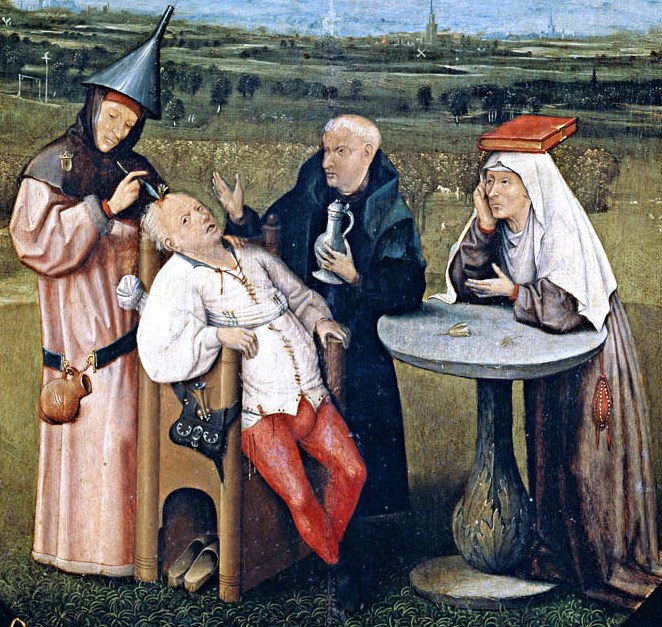My first piece of advice for patients about to undergo transsphenoidal pituitary surgery: when they invite you to the hospital to "meet your surgeon" before the surgery, don't expect to, you know, actually meet your surgeon. Obviously, that would be mad.
You get to meet a member of the the surgical team. When I was booked in for pituitary surgery, I was told that "my surgeon" would be Mr Hamstercheeks,* a man noted for his skill at rummaging around inside skulls. However, there were at least two other neurosurgeons involved in the operation, presumably for when Hamstercheeks got bored or hungry or felt like helping the anaesthetist with his sudoku.
One of these was Mr. Pout, who I met for my surgical assessment. He was a nice guy, and my main contact with the surgical team; he saw me before the operation, checked up on me every day while I was in hospital, signed me off to go home and then met me again three months later, just to confirm that my head hadn't accidentally fallen off in the intervening period.**
When one of the nurses at the hospital saw that Mr Pout was my surgeon, she almost turned green - with envy, not with
sulfhemoglobinaemia. "Ooh," she giggled, "he's very dishy isn't he? He's got
beautiful eyes."
Up until that point, it hadn't occurred to me that Mr Pout was good looking.*** As a general rule of thumb, announcing that you intend to drill through their skull is not the best way to generate ardour in a member of the opposite sex. Which may explain why
trepanning died out.
 |
| Practically an orgy. |
In any case, I suddenly realised that, given the number of clean and shiny objects in an operating theatre, an excessively attractive surgeon could be a liability. What if he became
distracted by his own reflection? What if the other male surgeons became envious of his hold over the female staff members, deliberately sabotaged my brain and then blamed it on him? What if he discovered his first grey hair, truly realised the transience of beauty in this mortal world, and was left to conduct my surgery through a fog of fatalistic despair?
All in all, I felt much happier about Mr. Hamstercheeks.
Anyway.
My second piece of advice to patients about to undergo pituitary surgery is this: bring a book to your surgical assessment. Better yet, bring two books and a small camping set. Having spent a lot of time at the hospital in recent years, I have become used to lengthy waiting times. I can happily sit for an hour at a stretch examining other patients' facial features and trying to work out who's got
acromegaly. I can read trashy magazines and become fully immersed in
Jordan's Latest Love Rat Shocker (With Exclusive Pictures Inside!). But I think Neurosurgery holds the record for my longest wait yet. And unlike the Endocrine Unit, the neuro department is
miles from a coffee shop.
When I actually got in to see Mr Pout, it was a fairly brief chat. We had a butchers at my MRI and discussed the possible complications of surgery, as follows:
1. death.
2. death
3. DEATH
I'm pretty sure he mentioned some other stuff too, but I have to admit that's what I focused in on. In fairness, the risk of death associated with transsphenoidal
pituitary surgery in an otherwise-healthy patient is pretty low, and it's only fair for surgeons to mention in advance that there's a slight risk of death, as with any operation involving general anaesthetic or sharp knives near major blood vessels. If they didn't mention it, I'm sure people would complain when they woke up dead. Plus I guess then if you're merely blinded or lose all pituitary function, you feel like at least it could have been worse. Other possible
complications of transspenoidal pituitary surgery include cerebro-spinal fluid leak, meningitis, stroke and coma leading to…you guessed it, death.
My favourite part about meeting with the surgeon was the letter I got afterwards. It was sent from Mr Pout to my endocrinologist, basically confirming that I was a suitable candidate for surgery, and I was copied in on the correspondance.
Here's the bit I liked the best:
"...I note Miss Grey is of petite build and has small nasal passages."
Thanks, Mr. Pout! I never thought of myself as having a "petite build" before. And small nasal passages! You know how to flatter a girl.
In fact, this is neurosurgical shorthand for "book an Ear Nose & Throat team for the surgery, we're not sure her nose is big enough for all the scalpels and cameras and things to fit up there".
I don't know what they write when the ENT people aren't required. Possibly:
"I note Miss --- is a bit of a heifer, with a big old conk to match. Tell ENT to take the day off".
__________________________________________________________________
*Personal details may have been subtly altered to protect the individuals concerned.
**A common complication of neurosurgery.



